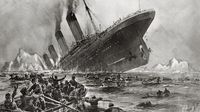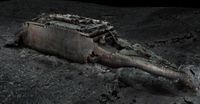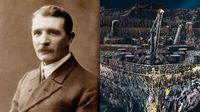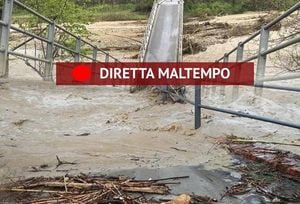More than a century after the tragic sinking of the RMS Titanic, new technologies are unveiling remarkable revelations about the ship's final moments. An innovative project led by the maritime mapping company Magellan has resulted in the creation of a "digital twin" of the ocean liner, a real-scale replica built from over 700,000 images captured by submersible robots. This 3D model allows researchers to revisit the night of April 14, 1912, when the ship collided with an iceberg in the North Atlantic, leading to the death of more than 1,500 people.
The documentary "Titanic: The Digital Resurrection," produced by National Geographic, presents these discoveries to the public, highlighting the sacrifice of engineers and the violence of the structural collapse of the hull. The Titanic, which departed from Southampton, England, on April 10, 1912, was celebrated as the largest and most luxurious passenger ship of its time. Designed to be unsinkable, it carried about 2,220 people, including passengers and crew, on its maiden voyage to New York. However, four days after setting sail, at 11:40 PM, the ocean liner suffered the fatal impact that changed its destiny. The lack of sufficient lifeboats contributed to only 700 survivors being rescued while the rest faced the icy waters of the ocean. This tragedy, which unfolded in less than three hours, transformed the Titanic into the most famous shipwreck in the world.
The digital reconstruction confirms that the engineers remained at their posts, ensuring electrical energy until the final moments. This effort allowed the sending of distress signals, saving lives, but cost the lives of 35 men in Boiler Room Two. The team from Magellan mapped the wreckage located at 3,800 meters deep, about 600 kilometers south-southeast of the coast of Newfoundland, in Canada. Unlike previous expeditions that offered only fragmented glimpses, this scan provides a complete view, from the imposing bow to the shattered stern. The bow, which rests upright on the seabed, maintains recognizable traces of the ship in its past glory, while the stern, 600 meters away, is a pile of twisted metal.
The analysis of the wreckage revealed that the Titanic did not break in half in an orderly manner, but was violently torn apart, ripping through first-class cabins where illustrious passengers sought refuge. A steam valve, found open on the poop deck, confirms historical accounts that the team led by chief engineer Joseph Bell remained on site for more than two hours after the collision, ensuring the generators were running and providing electricity for the lights and the radio system. The 35 men who worked in the boilers faced extreme conditions, continuing to feed the furnaces with coal, preventing the steam from coming into contact with the sea water. This dedication allowed distress signals to reach nearby ships, such as the RMS Carpathia, which rescued the survivors hours later.
The wreckage shows that the ship suffered a series of perforations along a narrow strip after scraping the iceberg. Simulations indicate that the damage extended through six watertight compartments, and the perforations allowed the slow, but continuous, entry of water, sealing the fate of the ocean liner. The reconstruction also clarifies the violence of the sinking, with fragments of the hull found meters away from the main sections, evidencing the destructive force that transformed the ship into a field of wreckage.
The "digital twin" ensures that the Titanic is preserved in detail for future generations, as experts predict that the hull may collapse completely in a few decades, leaving only more resistant items, such as bronze propellers, on the seabed. The documentary also highlights the posthumous redemption of First Officer William Murdoch, who has been accused for years of abandoning his post during the evacuation. The discovery of the position of a lifeboat winch indicates that he was actively involved in the evacuation when he was dragged by the waters. Witnesses from that time had already reported his bravery, and now the technology corroborates this narrative, clearing his name of unjust accusations.
The conditions of the boilers, some found concave, suggest that they were still operational at the moment of impact with the water. Another significant point highlighted is the destruction of a hatch, possibly hit directly by the iceberg, and the survey confirms that the initial impact was more devastating than previously imagined. The documentary "Titanic: The Digital Resurrection" is scheduled to premiere on April 11 in the United States on the National Geographic channel, and will be available on Disney+ from the next day, coinciding with the 113th anniversary of the Titanic's maiden voyage.
The combination of advanced technology and human narratives creates a unique experience that goes beyond mere historical reconstruction. The wreckage reveals more than physical damage; personal belongings, such as a statue of Diana of Versailles found among the sediments, connect the present to the past. These objects, preserved by the depth and cold, serve as silent reminders of the lives lost and the interrupted grandeur of the ship. The project not only celebrates technological advancements but also pays homage to those who perished and those who fought until the end.
In conclusion, the digital reconstruction of the Titanic goes beyond a technological feat. It humanizes the tragedy, giving voice to the engineers, officers, and passengers whose stories have been obscured by time. The open steam valve, the deformed boilers, and the scattered fragments tell a narrative of courage and despair, captured in details that were previously unimaginable. The work of Magellan and National Geographic ensures that this legacy is not lost, even as the physical wreckage succumbs to the ocean. The Titanic, which has already inspired films, books, and exhibitions, gains a new layer of meaning with this initiative, reinforcing the importance of revisiting the past with modern tools and offering a renewed perspective on one of the most significant events of the 20th century.









